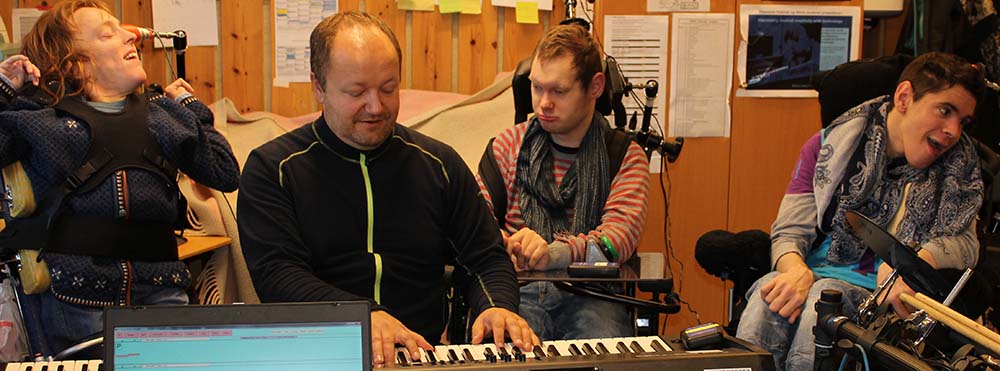
The Gordon Parry Centre is an exceptionally valuable resource created through the close working relationship between ArtForms, the music and arts team within Children’s Services at Leeds City Council, and YAMSEN:SpeciallyMusic (Yorkshire Association for Music and Special Educational Needs). Located within a suite of rooms at ArtForms premises in the West Park Centre, Leeds, the centre houses a library, therapy room, instrument library and a 'Sound and Light' multisensory room. The aim is to create music opportunities that are accessible to everyone, including those who have:
UPDATE: Unfortunately, since this interview the Gordon Parry Centre has had to close due to the demolition of the West Park Centre. YAMSEN and ArtForms continue to provide a mobile service whilst a new home is found for the Centre.
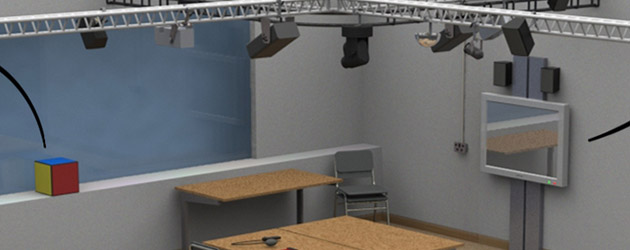
To meet the diverse needs of their users, the Gordon Parry Centre have invested in three Apollo Ensemble systems. These have proved a great hit with all visitors - none more so than with the Saturday morning “Aim Higher – Short Breaks” club. Participants were recruited from children of secondary school age in the Leeds area, particularly those with physical and sensory disabilities. “The people we’re working with at the moment are in wheelchairs and have very limited movement - they might have cerebral palsy or have had a stroke”, explains Joanna. “Our resources, especially the Apollo Ensemble, help them engage with music in a way that they can’t really in the classroom.”
In this kind of work, one of Ensemble’s most useful features is its ability to step through pre-programmed material. This has been used to great effect in the Saturday club, where one performer uses it to play the riff from Deep Purple’s Smoke on the Water. “We’ve also used it to step through a chord sequence to go under some other material. It’s great to be able to use a single switch to control when the system plays the next element of the musical sequence - whether that’s a chord or a melody note. We’ve also paired up some lights and visuals, or even moving images with the sound.”
Diane picks up the theme: “Often a single switch will only do a single thing, but Ensemble enables you to use a single switch to advance through a pre-programmed, complex series of elements - both sound and visual - so that all the user has to do is focus on the rhythm and timing.”
Diane is convinced of the value of working with sound and images simultaneously. “If everyone is using switches to trigger different percussion sounds, for example, it can be hard to tell who is doing what. So we set it up so that a different picture appears on the screen depending on who is playing. That transforms the session. Before, it was all just a lot of noise and now, suddenly, they’re in control because they can see as well as hear what’s going on.”
Another example uses a simple animation to reinforce phrase length. As a pre-recorded music phrase comes to an end, an on-screen image glides away and shrinks into the corner of the screen. It’s a very effective cue, giving the user a clear guide as to when to trigger the next event.
The ability to control lighting with Ensemble’s sensors has been very well received, especially by those on the autistic spectrum. A lighting rig in the multisensory room provides a variety of effects, including a moving head light where users can control the position of the light. “A lot of the work we do is with children for whom just pressing something and seeing the light move is exciting. A lot of autistic groups really respond to the moving lights.”

A key benefit of the Apollo Ensemble experience is the social dimension that it brings to working with groups. Both Diane and Joanna have found some interesting benefits from this dynamic. “For most of their time in mainstream schools, playing together is a no-go area. Although they have one-to-one support assistants, without this kind of enabling technology in music sessions, there can be a lack of accessible things to do on equal terms with the other members of the class”, explains Diane.
“Also, using their talkers (Speech Generating Devices) can be a slow process and it takes them a long time to say what they want. However, music technology like Ensemble gives them instant feedback and participation. The social aspects such as taking turns on an equal footing are really important. Working in a group can present all kinds of challenges. We’ve done lots of games to help them understand that they are able to interact quickly with somebody else. What we’ve found, with this group of children, is that the process is more important than the end product. They’re learning to work together when they’ve all got different controls, to look at each other.”
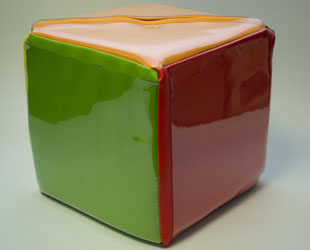
Although the room has sockets for wired switches, it’s Ensemble’s wireless sensors that often provoke the biggest reaction. One activity involves using the Ensemble Dice to trigger both sound and image, providing users a fun way to explore cause and effect.
Diane adds: “The groups love the wireless dice! We can spend a quarter of an hour sometimes just enjoying playing the sounds triggered by the dice. Choose a friend and throw it to them!”
The Ensemble has been used successfully in many different activities, several culminating in live performances for family, friends and well-wishers. Projects have been inspired by everything from Ancient Egypt to Benjamin Britten’s Peter Grimes. The portable technology has enabled them to take work into performance spaces, creating whole environments in which sound, lights and visuals are controlled interactively by the performers.
Diane concludes: “What’s great for me about this system is that you can reset the whole environment at the press of a button. It's really easy to manage all of that complexity in a live performance and you can hide the computer away. The system is just so flexible!”
 Diane Paterson
Diane PatersonDiane is Inclusive Music Team Leader for ArtForms. Her role sees her managing considerable expertise and resources across the city to ensure that children and young people have access to music making.
 Joanna Winster
Joanna WinsterJoanna is a team member at the Gordon Parry Centre. Before joining ArtForms, she studied Music Technology at the University of York.
DMX Lighting
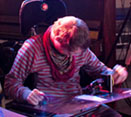
SKUG
Pioneering work from Norway, where SKUG are helping everyone become a musician.
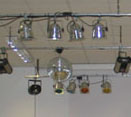
The Dales School
Music & lighting control across the curriculum at this special school in the Yorkshire Dales.
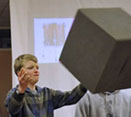
Sensory Extra, AAM
Fun with music & multisensory activities at Sensory Extra Sessions.
Site Map